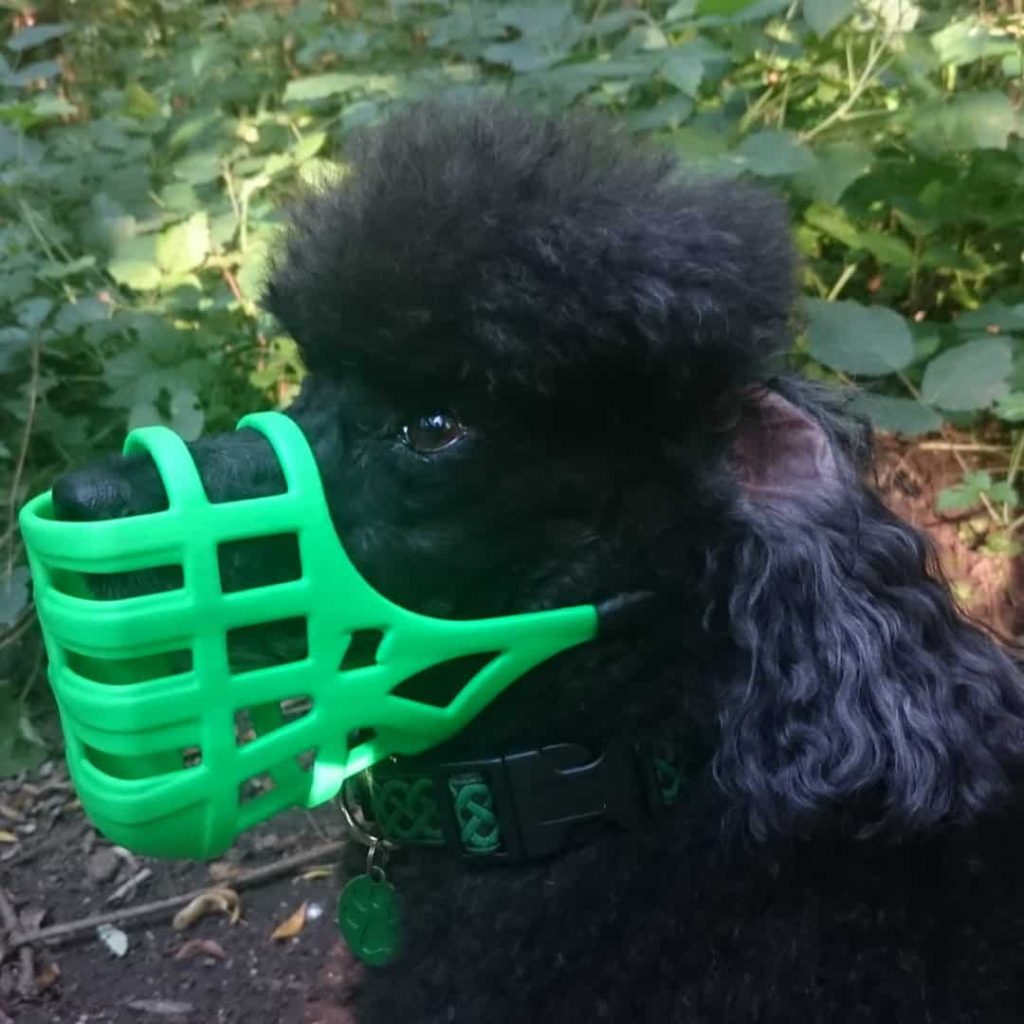POISON BAIT – RECOGNIZE AND PROTECT
// Individual custom made poison bait muzzle with feeding protection / feeding brake
Much of the coexistence of dog and owner consists of wondering what the other is eating.
This statement, which circulates in various social media channels as a funny saying, can quickly become bitterly serious – if the dog catches something that he should not actually eat. With the custom muzzle with food protection for dogs from Limuzz you avoid this situation and protect your darling from dangerous poison baits.
No matter how disciplined the dog is – if there is a sausage or a cracker on the side of the road, it will be difficult even for him to control himself. Poison bait, pieces of sausage prepared with razor blades or nails, poisonous food or simply horse manure from a horse treated with antibiotics, all this can be dangerous for our favorite.

Anti poison bait muzzle or training? Preferably both!
Anti-poison bait training is advisable for any dog, as it teaches them to indicate what they have found and not to eat it straight away. With a lot of discipline and training, you can certainly manage to raise a small vacuum cleaner. But you never have a hundred percent guarantee – so why not use a muzzle in addition as a food guard?
Especially in areas where you often receive poison bait warnings or in cities where there are a lot of things lying on the ground, an anti-food muzzle can save the dog and the owner a lot of nerves and veterinary costs.
So the ultimate protection against poison bait of all kinds is a muzzle. This must be closed in the area of the mouth. That is, the dog must not have the opportunity to stick out its tongue to pick up food. Also, it must be comfortable and not restrict your pet, but he should be able to pant and sniff normally. With a muzzle, the dog has no chance to eat poison bait, but is not restricted in its freedom of movement.
A Limuzz muzzle fulfills all these characteristics, is also very light, is fitted exactly to your dog’s muzzle and offers maximum safety – in the city and in the country!
POISON BAIT
Dogs must wear a muzzle and leash when out in public.
Whether and where a muzzle is compulsory in a city or in the countryside varies from state to state. Partly, even individual municipalities can set up guidelines as to whether muzzling is compulsory in public in the respective region.
Most often, the administrative authority decides on leash requirements and muzzle regulations. It is often the case that listed dogs, colloquially better known as fighting dogs, are subject to a muzzle requirement.
Some special permits exist, for certain cities, for example, if it can be proven that although it is a list dog, it is still very peace-loving.
In general, however, safety is paramount, which means that forthe most part a muzzle and leash must be worn.
// What does poison bait look like.
Prepared sausage, meat or cheese pieces.
Often sausage and pieces of meat are spiked with nails or razor blades. If the dog then sniffs them out and is delighted with a found snack, serious injuries occur in the animal’s mouth and throat. Deep cuts are made in the dog’s body.

Birch sugar cookies
One of the most inconspicuous types of poison bait are “dog cookies” prepared with birch sugar. The problem is that these little cookies are almost invisible when they are scattered along the roadside. Birch sugar is an increasingly popular sweetener in human nutrition recently. However, birch sugar/xylitol is already highly toxic to dogs in very small doses. Xylitol is the chemical name of the sweetener. It causes life-threatening liver damage in dogs. Even if the dog survives the poisoning, it will likely be dependent on medications that support liver function for the rest of its life.

Rat poison
Rat poison, as the name suggests, is intended to poison rats and mice. However, the poison is also used as poison bait against dogs. The attractants that make the poison attractive to rodents also attract dogs. Poisoning with rat poison often occurs unintentionally. For example, if the neighbor puts rat poison in his burr to get rid of uninvited rodents. the dog either eats the poison, during a control round through the neighbor’s garden, or finds the rats or mice that have died from the poison.

Poisons and pesticides of agriculture
Common poisonings are from contact poisons used in agriculture. After the use of pesticides, the dog may come into contact with the sprayed plants when running free and then ingest the poison by licking its muzzle or fur. Unfortunately, the use of pesticides does not have to be labeled at the edge of the field. So it is impossible to tell whether the farmer sprayed in the morning and the poison is still on the plants.

// Measures for poison baits
What to do if you come into contact with poisoned bait?
VETERINARIAN – IMMEDIATELY !!!
If your dog has come into contact with poison bait there is only one thing to do. As soon as possible to the vet. If you can secure a lure, be sure to take it with you. The veterinarian can thus quickly identify what it is and begin targeted therapy for your dog.
IMPORTANT!!! – In case of symptoms of poisoning immediately to the vet!!!!
Where are poisoned baits usually found?
Places that are particularly vulnerable to poison bait are usually places where many dogs go for walks or spend time. By choosing such places, the perpetrators can reach a larger number of dogs and thus spread their malicious intentions. Some examples of endangered places are:
- Dog parks and dog meadows
- Forest and nature areas
- City parks and green spaces
- Off-leash dog areas and dog beaches
How do I recognize poison bait poisoning?
If your dog shows the following symptoms after the walk, you have to react quickly.
- Vomiting is a common first symptom of poisoning.
- Excessive panting,
- Increased white saliva,
- pale mucous membranes,
- altered pupils and
- a general apathy
How to protect the dog from poison bait?
The most effective protection against poisoned baits is a well-fitting muzzle with food guard. The muzzle makes it very difficult or impossible for your dog to pick up food from the ground. Even if it tries to eat a lure, you have enough time to take action and intervene. In addition, dog owners should always be vigilant when walking or exercising their dogs and keep them on a lead in high-risk areas.
What to do if I find poison bait?
Putting out poison bait is a crime and will be prosecuted. If you find poison bait, report it to the police immediately. The latter will start the investigation and hopefully find the perpetrator. In any case, however, a warning message is sent from the official side and other dog owners are warned and can pay attention.
Training, training, training.
With a lot of effort you can get your dog to stop eating food that you have not allowed. How well that works depends on your consistency. And there is no 100% security with this method, unfortunately. Sometimes something is just way too delicious not to eat it.
